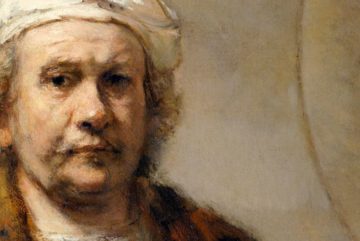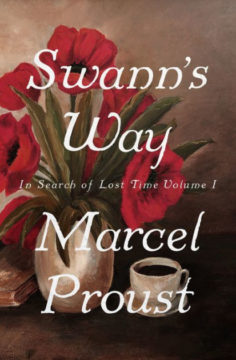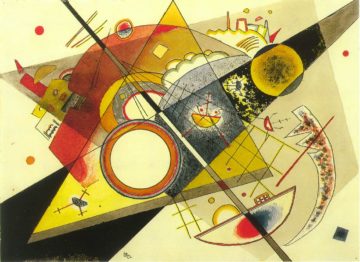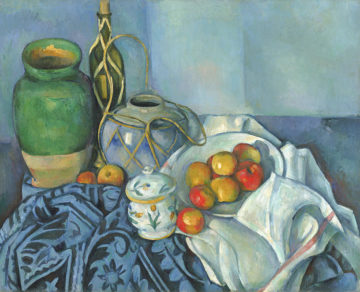by Christopher Horner

Why do we value art? I am going to suggest that a large part of the answer is to do with its unique power to disclose and convey areas of our lives unavailable to us though other means. Art, on this account, is a kind of communication, and kind of act: something performative – a communication that makes something happen, in a way that eludes ordinary discourse.
By ‘ordinary’ here I mean the kind of communication delivered by language when it is used to convey concepts: ranging from the most banal everyday speech to the most rarefied theory. Of course, ordinary speech acts themselves have a performative quality too – we don’t just communicate information through language, but make things happen, make requests, (‘shut the door’, ‘the meeting is over’ ‘help me!’). Moreover we use our bodies, tone of voice, emphasis and more: and the conceptual content may not even be what matters, especially when something isn’t banal, but matters greatly: moments of grief or joy, for instance. A gesture, a tear, or just silence may be more eloquent than words. It is this ‘beyond’ in our imperfect communications, that hint at what art can do. Art aspires to a more perfect communication: one that takes us beyond the confines of the lonely self.
Origins
If this suggestion is at all plausible it won’t strike us as a completely novel idea, but as one that we know or feel already, but perhaps have not quite got into focus. That will be a sign of its truth, I think. The account has its origins in particular in the German idealists of the late 18th and early 19th c – Kant, Schelling, Hegel, Schiller and many others. I won’t burden this article with lots of citations and footnotes, but rather try to make the basic case that I think comes from a reading of their work on aesthetics.

The first steps in this come from Kant, in his Critique of Judgement (1790). In it he famously gives an account of what happens when we encounter the beautiful and the sublime, and mainly discusses taste, our reception of the work of art, or of beauty in the natural world. But here I want to address not that, but some points he makes elsewhere. Kant claims that:
[…] the mode of expression of which men avail themselves in speech, in order to communicate to one another as perfectly as possible not merely their concepts but also their sensations.—This is done by word, deportment, and tone (articulation, gesticulation, and modulation). It is only by the combination of these three kinds of expression that communication between the speaker [and his hearers] can be complete. For thus thought, intuition, and sensation are transmitted to others simultaneously and conjointly. [51]
When we communicate we employ not only concepts (which belong to the understanding, to thought, but also though the non conceptual means, through sensations (‘deportment’, ‘tone’). Discursive communication (words, concepts) that one encounters in an article like this one, a medical diagnosis, or a scientific paper will always be inadequate to the full range of human experience. It’s as if one is broadcasting on a restricted bandwidth.
 Art, though, can do more: a kind of communication beyond the purely conceptual. Kant introduces the notion of the ‘Aesthetic Idea’:
Art, though, can do more: a kind of communication beyond the purely conceptual. Kant introduces the notion of the ‘Aesthetic Idea’:
[…]…by an Aesthetic Idea I understand that representation of the Imagination which occasions much thought, without, however, any definite thought, i.e. any concept, being capable of being adequate to it; it consequently cannot be completely compassed and made intelligible by language.[49]
The imagination fires up thought and drives it beyond its usual compass:
They do not, like logical attributes, represent what lies in our concepts […] but something different, which gives occasion to the Imagination to spread itself over a number of kindred representations, that arouse more thought than can be expressed in a concept determined by words. They furnish an aesthetic Idea, […] they enliven the mind by opening out to it the prospect into an illimitable field of kindred representations. […] (they) get the spirit that animates their works simply from the aesthetic attributes of the object, which accompany the logical and stimulate the Imagination, so that it thinks more by their aid, although in an undeveloped way, than could be comprehended in a concept and therefore in a definite form of words. [49]
For Kant, art provides us with something that takes us far beyond the narrow wavelength of ordinary discourse. It provide us with a kind of experience that brings into play our imagination, feeling and senses.
 Form as Disclosure
Form as Disclosure
Art here is a kind of experience that cannot be paraphrased by other means. The subject (viewer, listener, reader) must place herself in the way of the art and let the form of that art work upon her. For it will be the form of the art that will present the Aesthetic Idea (the non conceptual that puts thought into a spin). This is not to say that no rational or conceptual dimension is present, but it does account for the way in which art acts on us as a way of conveying huge swathes of human experience that we might say ‘lie too deep for words’, as we use them in the daily round.
 Let me suggest an example: When I sit through a performance of Janáček’s The Cunning Little Vixen, I am always moved, usually to tears, and I know I am not alone in responding like this to it. Any description of what the opera is ‘about’, cannot explain why this happens: the opera, is about the ways in which nature and humanity interact, about time and aging, the cycle of birth and death. Yet we know about all that already. So why the opera? The answer, of course, is that the art here is not just a bit of background to a ‘message’: it communicates through music, acting, staging, much more fully and completely in ways that elude a description of its conceptual content. Or take Proust’s or Shakespeare’s presentations of jealousy and obsession: something is communicated through the art that can’t be captured a description of the pathology of the individual in a psychology paper.
Let me suggest an example: When I sit through a performance of Janáček’s The Cunning Little Vixen, I am always moved, usually to tears, and I know I am not alone in responding like this to it. Any description of what the opera is ‘about’, cannot explain why this happens: the opera, is about the ways in which nature and humanity interact, about time and aging, the cycle of birth and death. Yet we know about all that already. So why the opera? The answer, of course, is that the art here is not just a bit of background to a ‘message’: it communicates through music, acting, staging, much more fully and completely in ways that elude a description of its conceptual content. Or take Proust’s or Shakespeare’s presentations of jealousy and obsession: something is communicated through the art that can’t be captured a description of the pathology of the individual in a psychology paper.
Art is that kind of experience because, like any action, it has the potential to be revelatory. There are things about ourselves that we know, but don’t know that we know. Sometimes we find out through what we do that we are actually gripped by quite other feelings than the ones we had previously thought we had. We have an unconscious: there are some ideas and attitudes that shape what we do and feel, that may only be disclosed through experience rather than reflection. Art here can be a kind of disclosive act of this kind. So Proust’s Swann discovers things about love through the kind of love he has for Odette, and we learn it too as we read the book.
 Our experience of following the story of Swann or Marcel, or of Othello, or of any character in a novel, play or opera is disclosive in this way for us when our feelings are engaged, and our imagination set to work. It’s not clear that this could be achieved through reading a textbook about love. And I’d apply this to poetry: there is something in a poem that cannot just be repeated more simply and economically in prose, without loss. Consider:
Our experience of following the story of Swann or Marcel, or of Othello, or of any character in a novel, play or opera is disclosive in this way for us when our feelings are engaged, and our imagination set to work. It’s not clear that this could be achieved through reading a textbook about love. And I’d apply this to poetry: there is something in a poem that cannot just be repeated more simply and economically in prose, without loss. Consider:
The Sick Rose
O Rose, thou art sick:
The invisible worm,
That flies in the night
In the howling storm,
Has found out thy bed
Of crimson joy;
And his dark secret love
Does thy life destroy.
Anyone inclined to ask why poems can’t just be written ‘more clearly’ as prose should be asked to write a prose version of Blake’s poem that conveys all that the poem does. It’s not just ‘about’ jealous love, or sex, or whatever. It is itself a kind of communication which is an experience of it own, and that conveys the experience through its form. The Sick Rose presents an Aesthetic Idea that sets thought in a spin.
 Music, too, conveys something beyond the conceptual. This doesn’t mean that has to be vague, dimly sense emotions. Mendelssohn surely meant this when he remarked that it is not that music is not precise enough for words, but rather it is more precise than words. And neither programme notes nor close analysis by a musicologist can be a substitute for the experience attending to the music. Movies, plays, dance: all are potentially ways of disclosing to us dimensions of experience unavailable to plain speech.
Music, too, conveys something beyond the conceptual. This doesn’t mean that has to be vague, dimly sense emotions. Mendelssohn surely meant this when he remarked that it is not that music is not precise enough for words, but rather it is more precise than words. And neither programme notes nor close analysis by a musicologist can be a substitute for the experience attending to the music. Movies, plays, dance: all are potentially ways of disclosing to us dimensions of experience unavailable to plain speech.
Art and Freedom
 Hegel thought that the the role of art was to find a way to reconcile us to ourselves as free beings. Art, for him, is the creation of the beautiful thing that reflects our freedom back to ourselves: we create a second nature in which we see ourselves. I do not have the space to develop and consider what means by this, except to stress that the work of art can be seen as a way in which ‘first’ nature is shaped by free human purposes. Music is a play of vibrations, or frequencies: of sound, but sound isn’t music. Music takes us into a world of meaning through the combinations of sounds, just as painting or photography can use light and colour to fashion something that is beyond what we find in nature. A Beethoven Symphony or a painting by Kandinsky are, as acts of the imagination, both within and beyond the natural and the conceptual. They can disclose to us who we are or could be.
Hegel thought that the the role of art was to find a way to reconcile us to ourselves as free beings. Art, for him, is the creation of the beautiful thing that reflects our freedom back to ourselves: we create a second nature in which we see ourselves. I do not have the space to develop and consider what means by this, except to stress that the work of art can be seen as a way in which ‘first’ nature is shaped by free human purposes. Music is a play of vibrations, or frequencies: of sound, but sound isn’t music. Music takes us into a world of meaning through the combinations of sounds, just as painting or photography can use light and colour to fashion something that is beyond what we find in nature. A Beethoven Symphony or a painting by Kandinsky are, as acts of the imagination, both within and beyond the natural and the conceptual. They can disclose to us who we are or could be.
Perhaps, if we really want to establish what is of value in art, we might say that the significance of great art is that it keeps nagging us, and won’t go away, because it has to do with something too important to be ignored, something pressing, something that is about being human and alive in the most complete sense that demands to be communicated and properly seen and felt.

This article does not aim at being a scholarly contribution, and as such it does not pretend to originality. It relies on the writings of the German Idealists, and on those contemporary philosophers who have discussed their work, such as Robert Pippin and Jay Bernstein, among others.
